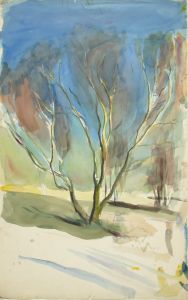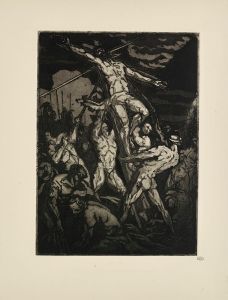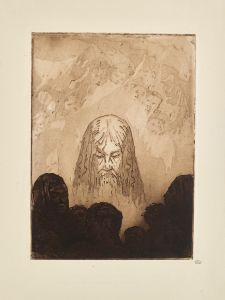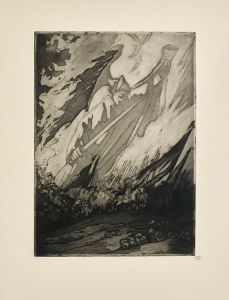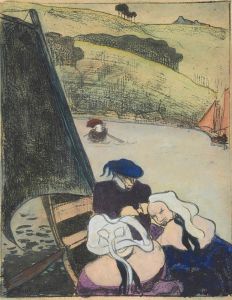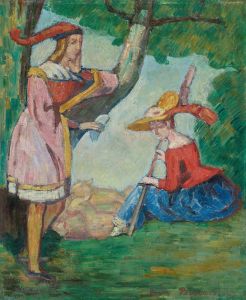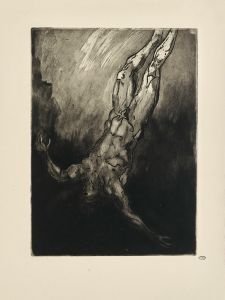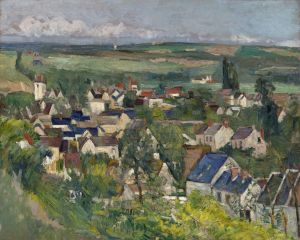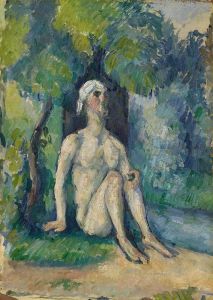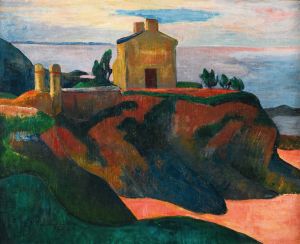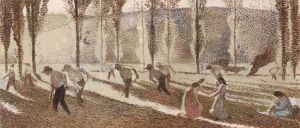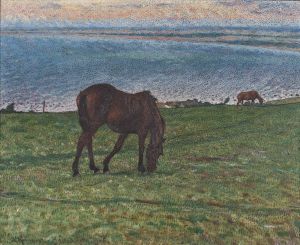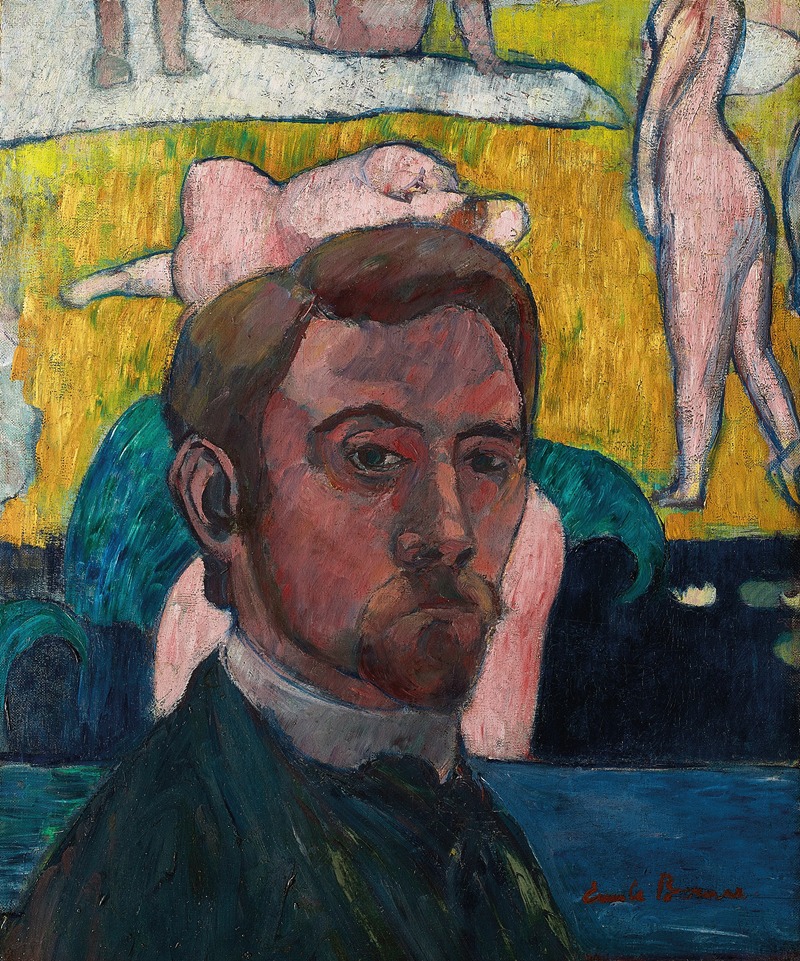
Autoportrait au tableau ‘Baigneuses à la vache rouge’
A hand-painted replica of Emile Bernard’s masterpiece Autoportrait au tableau ‘Baigneuses à la vache rouge’, meticulously crafted by professional artists to capture the true essence of the original. Each piece is created with museum-quality canvas and rare mineral pigments, carefully painted by experienced artists with delicate brushstrokes and rich, layered colors to perfectly recreate the texture of the original artwork. Unlike machine-printed reproductions, this hand-painted version brings the painting to life, infused with the artist’s emotions and skill in every stroke. Whether for personal collection or home decoration, it instantly elevates the artistic atmosphere of any space.
Émile Bernard's "Autoportrait au tableau ‘Baigneuses à la vache rouge’" is a notable work by the French Post-Impressionist artist, who was a significant figure in the development of modern art during the late 19th and early 20th centuries. Bernard was known for his innovative approaches to painting and his role in the Symbolist and Cloisonnist movements, which were characterized by bold outlines and flat areas of color.
The painting "Autoportrait au tableau ‘Baigneuses à la vache rouge’" is an intriguing piece that combines a self-portrait with a depiction of one of Bernard's other works, "Baigneuses à la vache rouge" (Bathers with a Red Cow). This self-referential approach highlights Bernard's interest in exploring the relationship between the artist and his creations, a theme that was prevalent in his work.
In this painting, Bernard presents himself in the act of painting or contemplating his work, which is a common motif in self-portraits by artists who seek to convey their identity and artistic process. The inclusion of "Baigneuses à la vache rouge" within the self-portrait suggests a dialogue between the artist and his subject matter, emphasizing the importance of the painting within Bernard's oeuvre.
"Baigneuses à la vache rouge" itself is a vibrant and dynamic composition, featuring figures of bathers alongside a striking red cow. The use of vivid colors and simplified forms reflects Bernard's Cloisonnist style, which was influenced by Japanese prints and medieval stained glass. This style was characterized by the use of bold outlines to separate areas of flat color, creating a sense of decorative harmony and emotional intensity.
Bernard's work was influential in the development of modern art, and he was associated with other prominent artists of his time, including Paul Gauguin and Vincent van Gogh. His exploration of color, form, and symbolism contributed to the evolution of Post-Impressionism and laid the groundwork for future movements such as Fauvism and Expressionism.
Throughout his career, Bernard was committed to challenging traditional artistic conventions and exploring new ways of seeing and representing the world. His self-portraits, including "Autoportrait au tableau ‘Baigneuses à la vache rouge’," offer insight into his artistic philosophy and his desire to engage with both his own identity and the broader cultural context in which he worked.
In summary, "Autoportrait au tableau ‘Baigneuses à la vache rouge’" is a significant work that encapsulates Émile Bernard's innovative approach to art and his exploration of the relationship between the artist and his creations. Through this painting, Bernard not only reflects on his own artistic identity but also contributes to the broader narrative of modern art's evolution during a period of significant change and experimentation.





